Related Research Articles

Moonstone: A Hard Days Knight is an action role-playing video game by Canadian independent developer Rob Anderson and published by Mindscape for the Amiga in 1991 and one year later converted to DOS with different sound and music. The title is a play on A Hard Day's Night.

Barbarian: The Ultimate Warrior is a 1987 video game developed and published by Palace Software for the Amstrad CPC, Commodore 64, and ZX Spectrum. The game was ported to many other systems and was licensed to Epyx who published it as Death Sword in the United States.
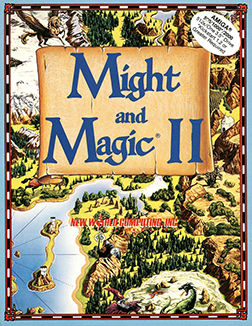
Might and Magic II: Gates to Another World is a role-playing video game developed and published by New World Computing in 1988. It is the sequel to Might and Magic Book One: The Secret of the Inner Sanctum.

Techland S.A. is a Polish video game developer and publisher founded in 1991 by Paweł Marchewka. It developed Call of Juarez (2006) and its prequel Call of Juarez: Bound in Blood (2009), as well as Dead Island (2011) and Dying Light (2015). The company is headquartered in Wrocław in western Poland and has offices in Wrocław and Warsaw.

Conan is a 2004 action-adventure hack and slash game based on the literary character Conan the Barbarian created by Robert E. Howard. It was developed by Slovak developer Cauldron and released for the Xbox, GameCube, PlayStation 2, and Microsoft Windows in Europe.

Kajko and Kokosz or Kayko and Kokosh is a Polish comic book series by Janusz Christa that debuted in Poland in 1972 and was published primarily until 1992. Mixing history and fantasy tropes it is centered on light-hearted and often comedic adventures of two Slavic warriors named Kajko and Kokosz, loosely resembling both Asterix and Obelix, as well as two personalities from Christa's earlier series on Kajtek i Koko. The series consists of 20 comic albums, as well as a number of shorter stories published in various magazines. In 2006, a short 3D animated movie was made.

Curse of Enchantia is a graphic adventure game developed and released by the British video game company Core Design for MS-DOS and the Amiga in 1992. The game tells the comic fantasy story of Brad, a teenage boy from modern Earth who was magically abducted to the world of Enchantia by an evil witch-queen. He needs to escape and find a way back to his own dimension.
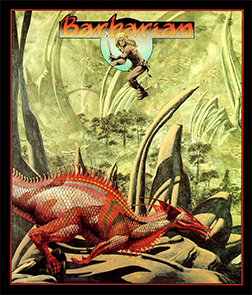
Barbarian is a 1987 platform game by Psygnosis. It was first developed for the Atari ST, and was ported to the Amiga, Commodore 64, MS-DOS, MSX, Amstrad CPC, and ZX Spectrum. The Amiga port was released in 1987; the others were released in 1988. The cover artwork is by fantasy artist Roger Dean.

Arnie is a 1992 action game developed by Realms of Fantasy and published by Zeppelin Games. The plot concerns a lone soldier who must fight through army camps.

Gorky 17 is a turn-based tactics tactical role-playing video game developed by Polish studio Metropolis Software and published by Monolith Productions for Microsoft Windows in 1999. The game was later ported to Linux by Hyperion Entertainment and published by Linux Game Publishing in 2006. The AmigaOS 4 version was released in 2015.

Sword of Sodan is a hack and slash video game released for the Amiga in 1988 by Discovery Software, which also commissioned a port for the Apple IIGS. A scaled-down version for the Sega Genesis was released in 1990 by Electronic Arts, and in 1993 it was released for the Apple Macintosh System 7 by Bethesda Softworks.

Conan is a 2007 action-adventure game developed by Nihilistic Software and published by THQ for the PlayStation 3 and Xbox 360. Players take control of the titular hero, Conan the Barbarian, from Robert E. Howard's fantasy literature.

Barbarian II: The Dungeon of Drax is a video game first published in 1988 for various home computers. It was released as Axe of Rage in North America. The game is the sequel to Barbarian: The Ultimate Warrior, which was published in 1987. In Barbarian II, the player controls a princess or barbarian character, exploring the game world to locate and defeat an evil wizard. The game's plot is an extension of its predecessor, although the gameplay is different. While the first game offers two players the opportunity for virtual head-to-head combat, the second is a single-player beat 'em up with fewer fighting moves. It uses a flip-screen style instead of scrolling.

Electro Man, originally distributed in Poland under the title Electro Body, is an MS-DOS platform game developed by the Polish company X LanD Computer Games. It was originally released in Poland by xLand in 1992, and later published by Epic MegaGames in the United States in 1993; apart from the changed title, the Electro Man release contains some changes, such as upgraded graphics. Though initially offered under a shareware license, the game was released as freeware by the developer on June 25, 2006, under the Creative Commons Attribution-ShareAlike 2.5 license. The player controls a cyborg named "Jacek", who must get through all the areas of a space base while destroying enemies.
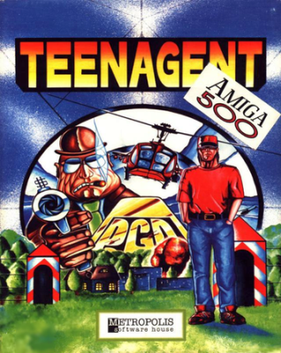
Teenagent is a 1994 point-and-click adventure game developed by Polish developer Metropolis Software House. It was released for Amiga and MS-DOS. The player controls teenage boy Mark Hopper, who wants to be a secret agent. It was the first game to be released on CD-ROM in Poland.

Book of Demons is an isometric hack and slash action role-playing created by Polish studio Thing Trunk. The game was officially released through Steam on 13 December 2018. The game was originally developed for Microsoft Windows, but the developers informed about plans to release it also on Xbox One. Book of Demons is the first installment of the Return 2 Games series that aims to bring classic hardcore genres to broader audiences. The game features an unusual art style - all elements of the game are visualised as papercuttings and pop-up book elements, and such style defines visual framework for the whole series. The game also brings some novelties to the genre - the card system which replaces equipment and skills systems typical for the genre, the Flexiscope feature which allows players to control duration of a game session and movement restricted to a path which add a tactical element to the gameplay.
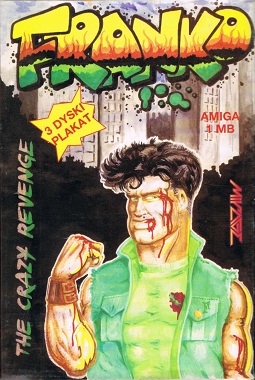
Franko: The Crazy Revenge is a side-scrolling beat 'em up computer game developed by the Polish Szczecin-based studio World Software for the Amiga in 1994, later ported to MS-DOS compatible operating systems in 1996. It follows the titular Franko causing mayhem on the streets of Szczecin to avenge his fallen friend Alex.
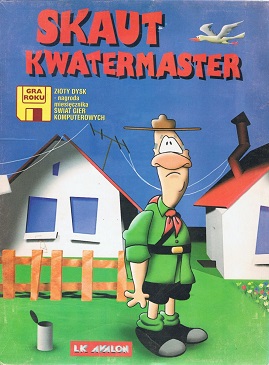
Skaut Kwatermaster is a 1995 Polish adventure game by LK Avalon for Amiga and DOS.
Skinny & Franko: Fists of Violence is an action-adventure video game developed by Blue Sunset Games and published by Console Labs S.A. It is a sequel to Franko: The Crazy Revenge.

Kajko i Kokosz is a Polish video point-and-click adventure game based on the Kayko and Kokosh comic-book series about the adventures of two Polish warriors, the comedy duo of Kajko and Kokosz. The game was released for Amiga in 1994, for PC MS-DOS in 1995, and for PC Windows in 1998. It was the first of several video-game adaptations of the Kayko and Kokosh comics. The game was described as a commercial success, despite receiving mixed reviews.
References
- ↑ LoganOldschool (2015-02-25). "Liczne niepowodzenia i rekord croudfundingu — historia Franko 2". dobreprogramy.pl (in Polish). Retrieved 2019-08-24.
- ↑ "Rozmowa z Tomaszem Tomaszkiem - programistą gry "Franko - The Crazy Revenge"". www.ppa.pl (in Polish). Retrieved 2019-08-24.
- ↑ "Doman Grzechy Ardana (1995 r.)". radioszczecin.pl (in Polish). 4 August 2018. Retrieved 2019-08-24.
- ↑ "Rozmowa z Mariuszem Pawlukiem - grafikiem gry "Franko - The Crazy Revenge"". www.ppa.pl (in Polish). Retrieved 2019-08-24.
- ↑ "Rozmowa z Tomaszem Tomaszkiem - programistą gry "Franko - The Crazy Revenge"". www.ppa.pl (in Polish). Retrieved 2019-08-24.
- ↑ "Gdzie jest sequel gry Franko: The Crazy Revenge? | GRYOnline.pl". GRY-Online.pl (in Polish). Retrieved 2019-08-24.
- ↑ "Rozmowa ze Sławomirem Mrozkiem - muzykiem gry "Franko - The Crazy Revenge"". www.ppa.pl (in Polish). Retrieved 2019-08-24.
- ↑ "Rozmowa z Mariuszem Pawlukiem - grafikiem gry "Franko - The Crazy Revenge"". www.ppa.pl (in Polish). Retrieved 2019-08-24.
- ↑ "Doman". amigaos.pl. Retrieved 2019-08-24.
- ↑ "Doman: Grzechy Ardana - informacje o grze, recenzje, zapowiedzi, aktualności, galerie". PPE.pl (in Polish). 2 June 2014. Retrieved 2019-08-24.
- ↑ "Brutalna krucjata w kolorowym świecie Nintendo - Franko 2". Polskie Gry Komputerowe (in Polish). 2017-08-04. Retrieved 2019-08-24.